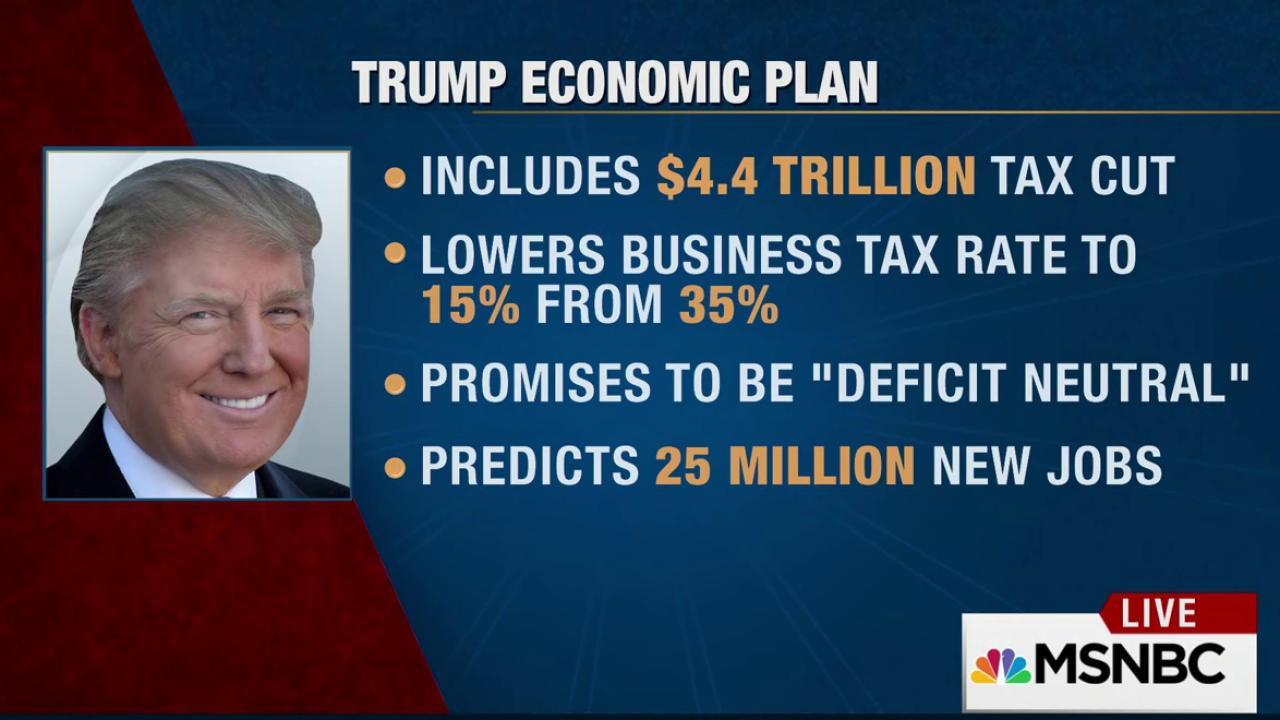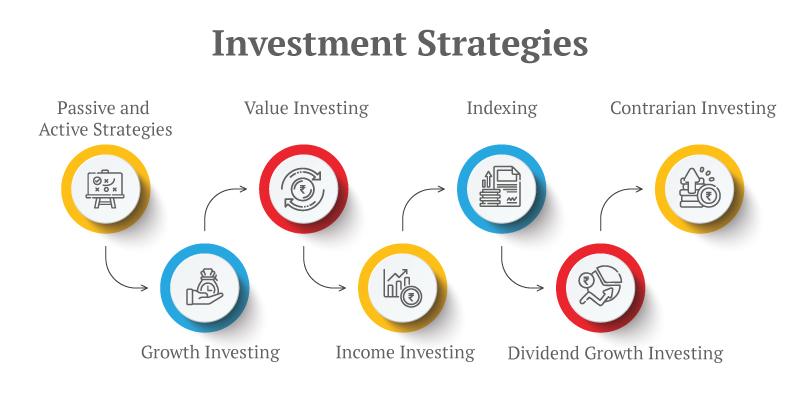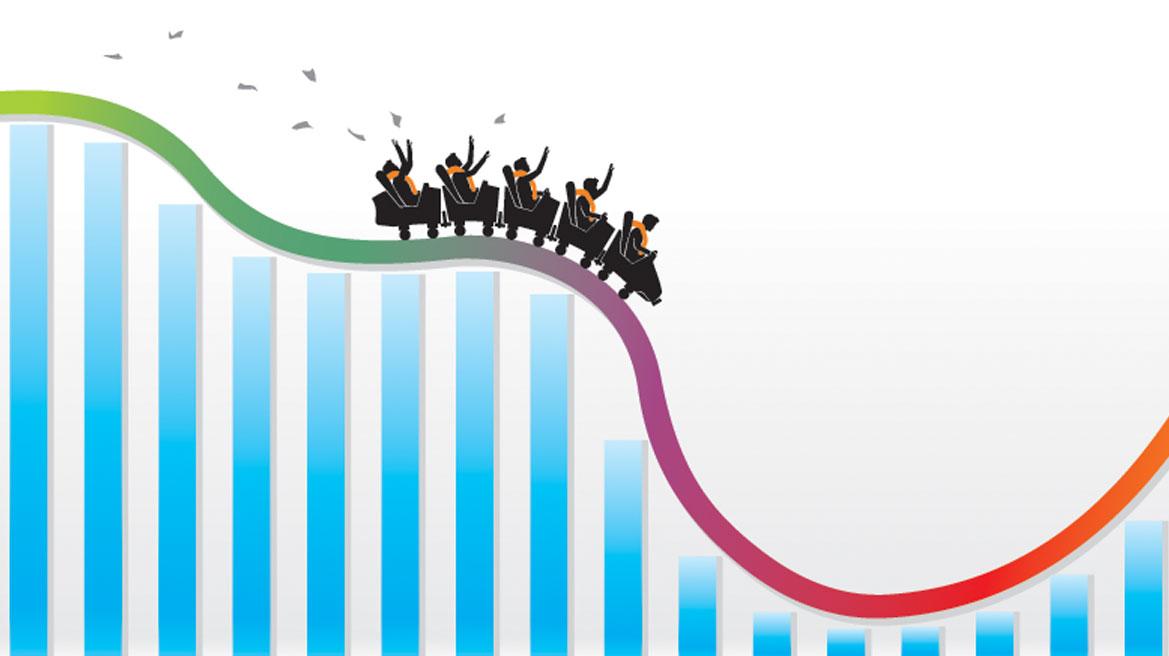As the final month of the year approaches, global markets find themselves at a crossroads, teetering on the edge of a December cooldown following a series of energetic rallies ignited by the political machinations of former President Donald Trump. What began as a fervent surge fueled by hopes of economic stimulus and policy shifts has now cooled into a period of reflection and recalibration. Investors, once buoyed by optimism, are reassessing their strategies as they navigate the complex interplay of economic indicators, geopolitical tensions, and seasonal trends. In this article, we delve into the factors influencing this market shift, the implications for investors, and the broader economic landscape as we approach year-end. Join us as we explore the aftermath of a Trump-driven rally and what may lie ahead for global economies as winter settles in.
Table of Contents
- Emerging Trends: Analyzing the Impact of Trumps Economic Policies on Market Dynamics
- Sector Spotlight: Key Industries Poised for Adjustment Amidst December Tapering
- Investor Strategies: Navigating the Shift Towards a Cooler Market Climate
- Future Outlook: Preparing for Potential Market Volatility in the New Year
- Q&A
- The Conclusion

Emerging Trends: Analyzing the Impact of Trumps Economic Policies on Market Dynamics
The recent surge in global markets can be traced back to a series of economic policies enacted during Trump’s presidency, which have had a lasting influence on market dynamics. Among these, tax reforms aimed at stimulating corporate investment and deregulation in various sectors set a momentum that initial sparked investor confidence. As we navigate towards December, market analysts are raising concerns about a potential cooldown, influenced by factors such as:
- Interest Rate Hikes: Anticipation of increased rates may temper borrowing and spending.
- Supply Chain Disruptions: Ongoing issues continue to affect production and delivery timelines, placing downward pressure on stock prices.
- Global Economic Conditions: Emerging economies facing turmoil could exacerbate volatility in developed markets.
Further complicating the situation are the implications of prevailing inflation rates, which reflect a persistent challenge following the economic strategies implemented. The market’s forward momentum could be threatened if policymakers fail to address inflation effectively. Below is a snapshot showcasing recent economic indicators related to Trump’s policies and their projected impacts:
| Indicator | Current Value | Predicted Trend |
|---|---|---|
| Corporate Tax Rate | 21% | Stable |
| Inflation Rate | 7.9% | Increased |
| Unemployment Rate | 4.2% | Stable |

Sector Spotlight: Key Industries Poised for Adjustment Amidst December Tapering
As the global economy prepares for a significant adjustment in December, various sectors are bracing themselves for potential volatility. The anticipated tapering of fiscal stimulus, catalyzed by the previous administration’s economic policies, is likely to impact carefully balanced industries that thrived during the Trump-driven rally. Technology, real estate, and energy sectors seem particularly vulnerable, with investors closely monitoring their performance.
To further illustrate the impact of the upcoming changes, here are some key trends that across these industries may shift in the following weeks:
- Technology: Increased scrutiny on valuations and a potential slowdown in spending on digital services.
- Real Estate: Rising interest rates may dampen the housing market momentum, affecting sales and new construction.
- Energy: Fluctuations in oil prices driven by demand changes as economies adjust post-pandemic could lead to uncertainty in investments.
In addition to these trends, market responses will likely shape strategic decisions moving into the new year. Analyzing the current financial health of these sectors is crucial for investors positioned for both growth and stability. The following table summarizes the anticipated adjustments in each of the highlighted industries:
| Industry | Potential Challenges | Expected Opportunities |
|---|---|---|
| Technology | Valuation corrections | Innovation in AI and cloud computing |
| Real Estate | Higher borrowing costs | Increased demand for rentals |
| Energy | Volatile fossil fuel prices | Transition to renewable sources |

Investor Strategies: Navigating the Shift Towards a Cooler Market Climate
As we approach December, investors are advised to recalibrate their strategies in light of a rapidly cooling market sentiment. The exuberance spurred by recent Trump-driven rallies is giving way to a more cautious climate, prompting a reassessment of portfolio allocations. This is a pivotal moment that calls for a blend of defensive positioning and selective opportunities. Investors may consider embracing a diversified approach that emphasizes steadfast industries, such as consumer staples and utilities, which historically tend to weather market downturns better than cyclical sectors. Additionally, fixed-income assets might see increased appeal, offering stability in an unpredictable landscape.
In the face of shifting dynamics, it is crucial to keep an eye on key economic indicators that could signal further market adjustments. Monitoring factors such as interest rates, inflation trends, and employment data can provide valuable insight into potential market movements. Below is a snapshot of essential indicators worth tracking:
| Indicator | Current Status | Implications |
|---|---|---|
| Interest Rates | Stable | Potential for upward adjustments |
| Inflation Rate | Moderate | Pressures on consumer spending |
| Unemployment Rate | Low | Stable wage growth |
In light of these developments, maintaining a flexible investment thesis is critical. Emphasizing risk management and staying informed on geopolitical developments will aid in navigating what is expected to be a more conservative investment atmosphere heading into the new year. Investors could also explore opportunities in emerging markets, where growth potential may still prevail, albeit with heightened risk awareness.

Future Outlook: Preparing for Potential Market Volatility in the New Year
The close of the year often ushers in a period of reflection for both investors and analysts as they brace for potential shifts in market dynamics. As we anticipate a cooling off from recent highs spurred by political maneuvers, it’s crucial to establish a robust strategy that can accommodate fluctuations. Here are some considerations to keep in mind:
- Diversification: Spreading investments across various sectors and asset classes can mitigate risks associated with market volatility.
- Liquidity Management: Maintaining adequate cash reserves allows for flexibility in responding to sudden market changes.
- Risk Assessment: Continually evaluate the risk/reward ratio of your investments to ensure they align with your long-term goals.
Additionally, it is essential to stay informed about economic indicators and potential policy changes that could influence market sentiment. By analyzing historical data and market trends, investors can gain valuable insights into upcoming possibilities. Below is a simplified table outlining key economic indicators to monitor in the coming months:
| Indicator | Purpose | Frequency |
|---|---|---|
| GDP Growth Rate | Measures economic performance | Quarterly |
| Unemployment Rate | Indicates labor market health | Monthly |
| Inflation Rate | Tracks price changes over time | Monthly |
| Consumer Confidence Index | Measures optimism about the economy | Monthly |
By remaining vigilant and adaptable in your investment approach, you can better navigate the uncertainty that often accompanies market transitions into the new year.
Q&A
Q&A: Global Markets and the December Cooldown After the Trump-Driven Rally
Q1: What has been the primary driver of the recent rally in global markets?
A1: The recent rally in global markets has largely been propelled by sentiments surrounding former President Trump’s policies, particularly following announcements about economic stimulus and deregulation measures. Investor optimism surged as they anticipated these changes would invigorate economic growth, leading to heightened trading activity and rising stock prices.
Q2: Why are experts predicting a December cooldown in the markets?
A2: Analysts foresee a December cooldown as historical trends suggest that markets often experience a pullback after significant rallies. Additionally, uncertainties regarding upcoming economic data releases, potential changes in monetary policy, and political dynamics could prompt a more cautious stance among investors as they reassess the sustainability of the current rally.
Q3: How might interest rates impact market performance in December?
A3: Interest rates play a critical role in market performance, as changes can affect borrowing costs and overall economic activity. Should the Federal Reserve signal an increase in interest rates to combat inflation, it could lead to decreased consumer spending and investment, contributing to a slowdown in market momentum and a subsequent cooldown.
Q4: What are the potential risks that could exacerbate a market cooldown?
A4: Several risks could amplify a potential market cooldown, including geopolitical tensions, supply chain disruptions, or unexpected economic data that might surprise investors. Additionally, if the markets perceive that the Trump administration’s policies are not translating into immediate economic improvements, confidence could wane, further contributing to market volatility.
Q5: Are there sectors likely to be more affected by this December cooldown than others?
A5: Yes, certain sectors, such as technology and consumer discretionary, may experience more pronounced effects during a cooldown due to their higher valuations and sensitivity to interest rates. In contrast, more defensive sectors like utilities or healthcare may show relative resilience as investors flock to safer investments during market uncertainties.
Q6: What strategies can investors employ to navigate the anticipated market cooldown?
A6: Investors may benefit from diversifying their portfolios, considering a mix of stocks, bonds, and alternative investments to mitigate risks. Maintaining a long-term view while staying informed about market trends can help navigate potential turbulence. Additionally, utilizing stop-loss orders and regularly re-evaluating investment goals can provide a safety net against unforeseen declines.
Q7: Could the December cooldown present any opportunities for savvy investors?
A7: Absolutely. While a market cooldown may introduce volatility, it can also create buying opportunities for investors who are willing to look beyond immediate fluctuations. Identifying undervalued stocks or sectors that may rebound once the market stabilizes can lead to growth potential in the long term.
Q8: What are the key indicators investors should monitor as December progresses?
A8: Investors should keep an eye on macroeconomic indicators such as employment figures, inflation rates, and consumer confidence indices. Additionally, financial earnings reports and updates on government policies will be critical in assessing market sentiment and potential recovery patterns.
The Conclusion
As the curtains draw on the tumultuous year in global markets, the December cooldown serves as a reminder of the cyclical nature of economic momentum. The Trump-driven rally, characterized by bursts of optimism and fervent investor enthusiasm, has set the stage for a reflective transition into a more tempered market climate. While volatility may reign in the final month of the year, it also offers a chance for recalibration and strategic reassessment.
Looking ahead, investors will undoubtedly be keen to digest the implications of the policies that have fueled recent gains, alongside the foundational shifts taking shape in the global economy. With the holiday season upon us, the anticipation for 2024 brings both promise and caution; a delicate balance of hope tempered by pragmatic foresight. As we bid farewell to the era of exuberance, the question lingers—what new narratives will emerge in the coming year, and how will they reshape the landscape of investment opportunities worldwide? The global markets may be cooling, but the dialog on what’s next is just heating up.

w7449u
oral stromectol cost – stromectol uk buy carbamazepine 400mg cost
buy accutane 40mg pill – decadron 0,5 mg pill linezolid price
order amoxicillin sale – ipratropium 100mcg sale order combivent 100 mcg pill
zithromax 250mg canada – purchase tindamax for sale bystolic 20mg canada
order omnacortil 40mg pill – oral progesterone 100mg buy generic prometrium 100mg
buy neurontin 100mg generic – brand itraconazole 100 mg sporanox medication
buy augmentin 625mg sale – order cymbalta pill buy duloxetine cheap
monodox online – cheap albuterol glucotrol 10mg sale
buy augmentin 375mg generic – order duloxetine pill duloxetine 20mg generic
semaglutide 14 mg drug – rybelsus ca how to buy periactin
buy zanaflex online cheap – plaquenil 200mg sale microzide 25mg uk
buy tadalafil 5mg generic – generic cialis 20mg sildenafil 100mg over the counter
order viagra 50mg generic – cialis 20mg over the counter cialis online
atorvastatin 40mg oral – norvasc price zestril without prescription
order cenforce 100mg – buy cenforce 100mg generic buy generic glucophage
order lipitor 10mg generic – buy generic amlodipine prinivil online
buy atorvastatin 40mg generic – atorvastatin 80mg drug zestril 10mg cheap
order prilosec 10mg – lopressor sale buy tenormin 50mg pills
depo-medrol sale – order medrol online cheap order triamcinolone
order clarinex 5mg – loratadine over the counter order priligy 60mg online cheap
order misoprostol 200mcg sale – diltiazem cheap diltiazem canada
buy acyclovir 800mg for sale – rosuvastatin pill buy rosuvastatin 20mg pill
motilium online – order sumycin online cheap cyclobenzaprine 15mg canada
buy generic domperidone – oral domperidone 10mg oral cyclobenzaprine 15mg
inderal usa – methotrexate oral methotrexate 5mg canada
order warfarin 2mg generic – metoclopramide online buy order cozaar 50mg generic
purchase levofloxacin – order levaquin generic ranitidine medication
esomeprazole 20mg capsules – imitrex sale buy imitrex paypal
order mobic online cheap – buy meloxicam 7.5mg online cheap flomax 0.2mg uk
buy zofran sale – generic aldactone order generic zocor
valtrex 1000mg cheap – buy diflucan 200mg pill buy generic fluconazole
purchase provigil pills cost modafinil where can i buy modafinil order provigil 100mg generic purchase modafinil without prescription provigil cheap buy provigil for sale
More articles like this would make the blogosphere richer.
Good blog you procure here.. It’s obdurate to find high quality belles-lettres like yours these days. I honestly respect individuals like you! Withstand vigilance!!
azithromycin usa – purchase flagyl cost flagyl
purchase rybelsus online cheap – cyproheptadine online buy where to buy periactin without a prescription
buy domperidone 10mg generic – how to get domperidone without a prescription flexeril 15mg usa
inderal 10mg without prescription – inderal 10mg cost methotrexate without prescription
amoxil buy online – order ipratropium 100 mcg generic order ipratropium without prescription
buy zithromax paypal – buy generic azithromycin 250mg cheap bystolic 20mg
generic clavulanate – atbioinfo.com buy ampicillin generic
buy esomeprazole 40mg for sale – anexa mate buy nexium 20mg without prescription
warfarin 5mg sale – https://coumamide.com/ losartan buy online
meloxicam ca – swelling order generic meloxicam 15mg
deltasone 5mg uk – https://apreplson.com/ purchase prednisone sale
where to buy over the counter ed pills – https://fastedtotake.com/ buy erectile dysfunction drugs over the counter
amoxicillin sale – https://combamoxi.com/ buy amoxicillin generic
forcan pills – https://gpdifluca.com/ order diflucan 100mg generic
cenforce pills – https://cenforcers.com/ order cenforce pills
maximpeptide tadalafil review – fast ciltad tadalafil no prescription forum
zantac 300mg ca – https://aranitidine.com/# ranitidine 300mg brand
cialis picture – what does generic cialis look like order cialis online cheap generic
This is the type of advise I unearth helpful. neurontin para la ansiedad
buy viagra manchester – this buy sildenafil citrate 50mg
I took away a great deal from this.
Thanks towards putting this up. It’s understandably done. prednisone hot flashes
More articles like this would make the blogosphere richer. https://ursxdol.com/prednisone-5mg-tablets/
Thanks on putting this up. It’s understandably done. https://prohnrg.com/product/acyclovir-pills/
I’ll surely bookmark this page.
More posts like this would prosper the blogosphere more useful. levitre l’aigle
I’ll certainly be back for more.
Such a valuable resource.
Thanks for sharing. It’s brilliant work.
You’ve clearly put in effort.
Such a beneficial bit of content.
I learned a lot from this.
I truly liked the style this was presented.
More blogs like this would make the online space better.
The detail in this content is noteworthy.
Thanks for posting. It’s top quality.
The thoroughness in this piece is commendable.
I discovered useful points from this.
The detail in this article is praiseworthy.
I discovered useful points from this.
The thoroughness in this draft is noteworthy. https://ondactone.com/product/domperidone/
I genuinely liked the style this was presented.
I am in fact enchant‚e ‘ to gleam at this blog posts which consists of tons of of use facts, thanks for providing such data.
clopidogrel cheap
https://t.me/s/TgGo1WIN/15
Официальный Telegram канал 1win Casinо. Казинo и ставки от 1вин. Фриспины, актуальное зеркало официального сайта 1 win. Регистрируйся в ван вин, соверши вход в один вин, получай бонус используя промокод и начните играть на реальные деньги.
https://t.me/s/Official_1win_kanal/3711
https://t.me/s/Official_1win_kanal?before=5267
I’ll certainly bring back to be familiar with more. http://wightsupport.com/forum/member.php?action=profile&uid=21396
order forxiga 10mg – forxiga 10mg pills order forxiga 10 mg pills
purchase xenical generic – this buy xenical 120mg generic
This is a keynote which is virtually to my heart… Diverse thanks! Unerringly where can I find the phone details an eye to questions? http://www.underworldralinwood.ca/forums/member.php?action=profile&uid=493497
You can shelter yourself and your family by way of being cautious when buying panacea online. Some pharmacopoeia websites function legally and offer convenience, reclusion, rate savings and safeguards to purchasing medicines. buy in TerbinaPharmacy https://terbinafines.com/product/prednisone.html prednisone
This is a topic which is forthcoming to my heart… Myriad thanks! Exactly where can I find the acquaintance details in the course of questions? propecia repousse cheveux
Greetings! Utter useful par‘nesis within this article! It’s the crumb changes which liking obtain the largest changes. Thanks a lot quest of sharing!
https://t.me/s/Top_BestCasino/173
https://t.me/s/flagman_official_registration
https://t.me/s/iGaming_live/4866
https://t.me/s/Legzo_officials
This is the kind of writing that stays with readers—outstanding job.
This post is filled with brilliant insights and a refreshing level of detail, making it an outstanding resource for anyone seeking reliable and engaging content.
https://t.me/s/Beefcasino_officials
https://t.me/s/iGaming_live/4871